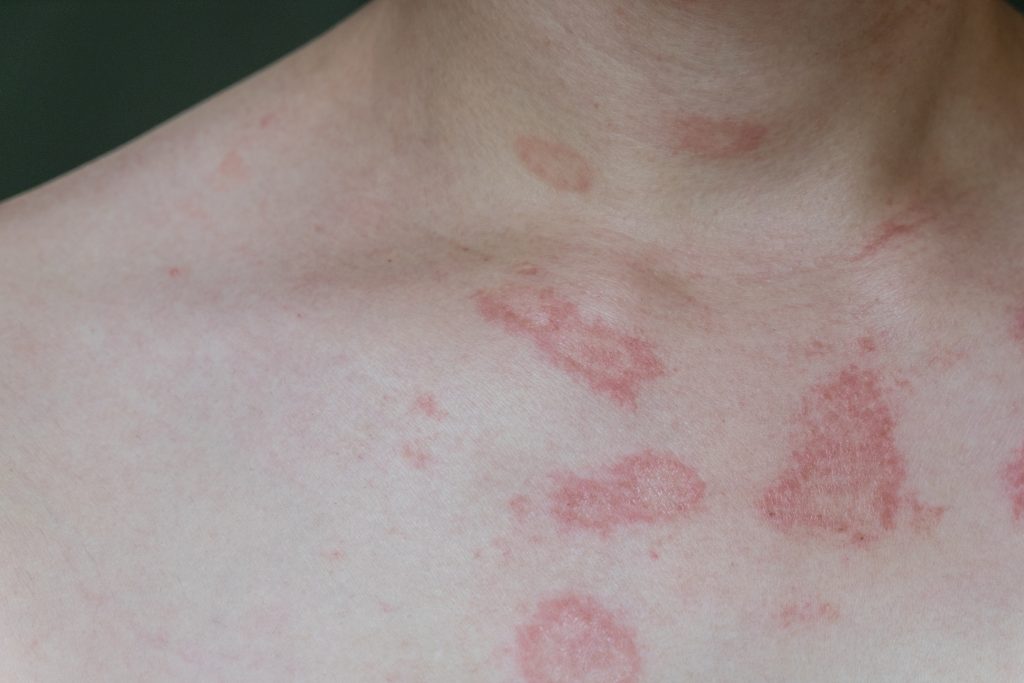Introduction
Acute rheumatic fever (ARF) is a systemic illness that occurs 2-4 weeks after pharyngitis in some people, due to cross-reactivity to group A β-haemolytic streptococcus (GAS), also called Streptococcus pyogenes.
Epidemiology
- 4 million children affected worldwide
- 94% of cases are in developing countries
- Most common in tropical countries with no seasonal variation
- More common in females
Pathophysiology
Streptococcus pyogenes is a gram-positive cocci and it produces two cytolytic toxins: streptolysin O and S.
Rheumatogenic strains of GAS contain M proteins in their cell wall and are immunogenic. B cells are stimulated to produce anti-M protein antibodies against the infection which also cross react with other tissues e.g. that of the heart (causing rheumatic heart disease), brain, joints and skin leading to a constellation of multiorgan signs and symptoms. This is also exacerbated by production of activated cross reactive T cells.
Risk Factors
- Children and young people
- Poverty
- Overcrowded and poor hygiene places
- Family history of rheumatic fever
- D8/17 B cell antigen positivity
Clinical Features
The Revised Jones Diagnostic Criteria (below) describes the key clinical features that may be present. In addition to this, you may elicit from the history that they had a recent sore throat or scarlet fever. Also, in severe acute rheumatic failure, a heart murmur might be heard on examination and it is most commonly the mitral valve, which is affected.
Diagnostic Requirements
Positive throat culture for Group A β-haemolytic streptococcus or elevated anti-streptolysin O (ASO) or anti-deoxyribonuclease B (anti-DNASE B) titre.
AND
2 major criteria OR 1 major and 2 minor criteria present for initial ARF. (Same criteria for recurrent ARF plus can also be just 3 minor criteria)
Major Criteria (SPECS)
- Sydenham’s chorea
- Polyarthritis
- Erythema marginatum (figure 1: more examples at dermnetnz)
- Carditis
- Subcutaneous nodules
Minor Criteria (CAPE)
- CRP or ESR – Raised acute phase reactant
- Arthralgia
- Pyrexia/Fever
- ECG – Prolonged PR interval
*Joint (arthritis or arthralgia) and cardiac (carditis or prolonged PR interval) manifestations can only be counted once, not twice, as either a major or a minor criterion.
*Slight variation of criteria for high risk population
Differential Diagnosis
Thera are numerous differential diagnoses to ARF, but below are examples of a few differentials and their distinguishing features.
| Septic Arthritis |
|
| Reactive arthropathy |
|
| Infective endocarditis |
|
| Myocarditis |
|
Investigations
- Bloods: ESR, CRP, FBC (WBC),
- Blood cultures to exclude sepsis
- Rapid Antigen Detection Test
- Throat culture: may be negative by the time rheumatic fever symptoms occur
- Anti-streptococcal serology: ASO and anti-DNASE B titres
- ECG: prolonged PR interval
- CXR if carditis is suspected: congestive heart failure may be seen in ARF due to valvular damage
- Echocardiography
Management
Initial management in confirmed rheumatic fever
- Antibiotics e.g. benzathine benzylpenicillin (1st choice due to its long acting property, serving the purpose of GAS eradication and secondary prophylaxis), phenoxymethylpenicillin , amoxicillin. In confirmed penicillin allergy, alternatives include cephalosporins (avoid in IgE mediated penicillin allergy and anaphylaxis), macrolides and clindamycin (4)
- Aspirin or NSAIDs e.g. naproxen or ibuprofen
- Assess for emergency valve replacement
- In severe carditis (e.g. congestive cardiac failure or 3rd degree heart block) glucocorticoids and diuretics may be required
Definitive and Long‐term management
Secondary prophylaxis with intramuscular Benzathine benzylpenicillin every 3-4 weeks, oral Phenoxymethylpenicillin twice daily, oral sulfadiazine daily, or oral azithromycin (in penicillin allergy) (4)
Complications and Prognosis
- 2% of the population can get permanent damage to heart valves and chronic rheumatic heart disease
- With treatment ARF should resolve within 2 weeks but cardiac inflammation may take months to resolve fully and thus, it is common for patients to relapse within this time
References
| [1] | [Online]. Available: http://bestpractice.bmj.com |
| [2] | [Online]. Available: emedicine.medscape.com |
| [3] | American Heart Association Committee on Rheumatic Fever, Endocarditis, and Kawasaki Disease of the Council on Cardiovascular Disease in the Young. Revision of the Jones Criteria for the diagnosis of acute rheumatic fever in the era of Doppler echocardiography: a scientific statement from the American Heart Association. Circulation. 2015 May 19;131(20):1806-18. |
| [4] | Prevention of rheumatic fever and diagnosis and treatment of acuteStreptococcal pharyngitis: a scientific statement from the American Heart Association Rheumatic Fever, Endocarditis, and Kawasaki Disease Committee of the Council on Cardiovascular Disease in the Young, the Interdisciplinary Council on Functional Genomics and Translational Biology, and the Interdisciplinary Council on Quality of Care and Outcomes Research: endorsed by the American Academy of Pediatrics. Circulation. 2009 Mar 24;119(11):1541-51. |

